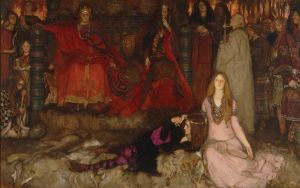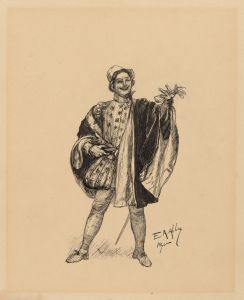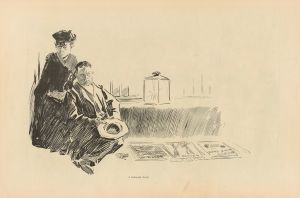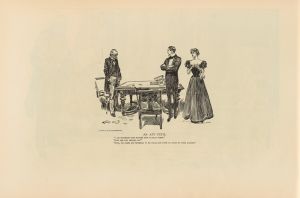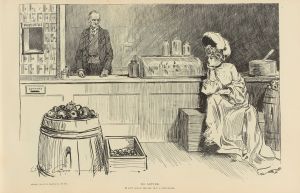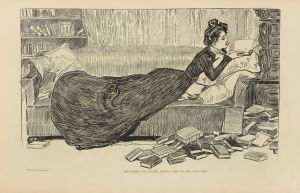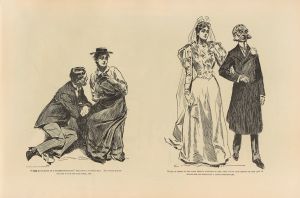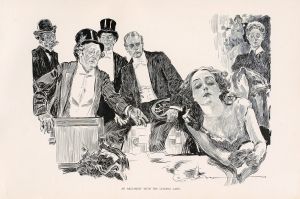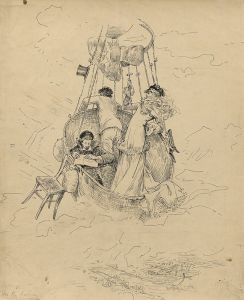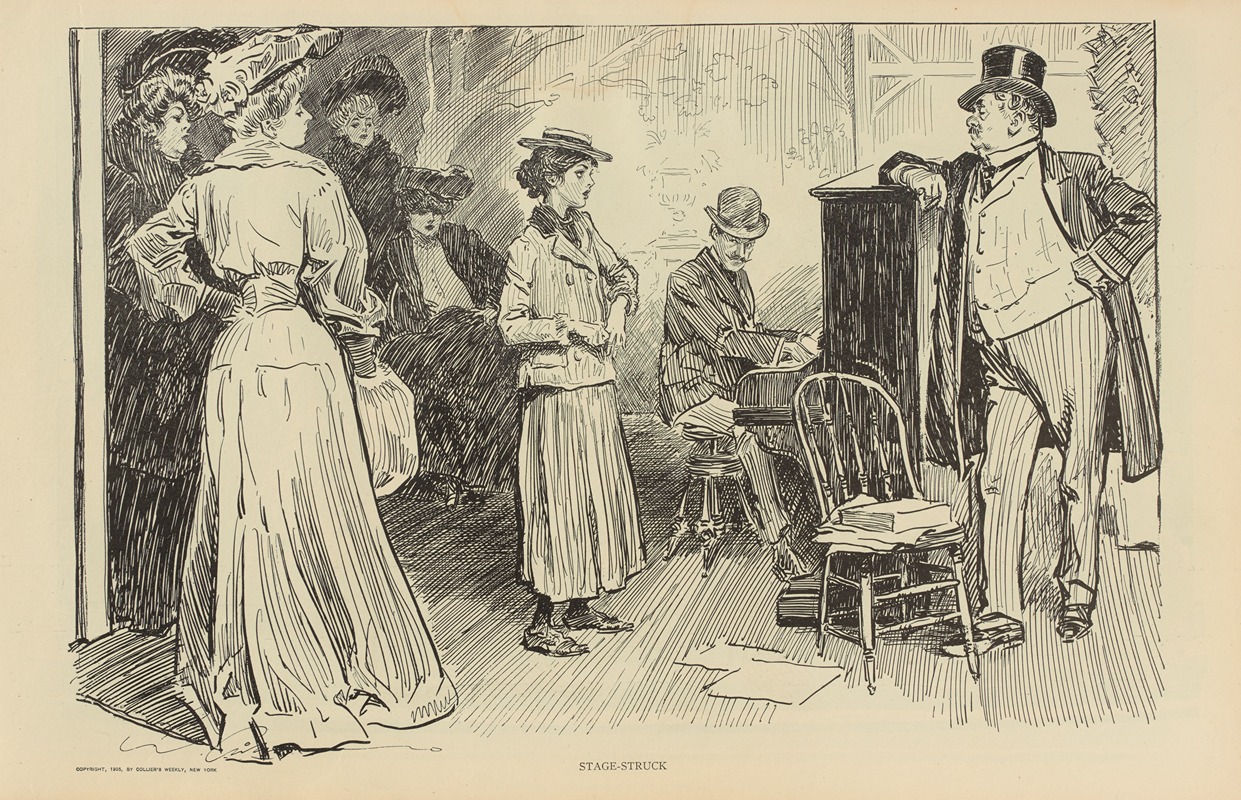
Stage-struck
A hand-painted replica of Charles Dana Gibson’s masterpiece Stage-struck, meticulously crafted by professional artists to capture the true essence of the original. Each piece is created with museum-quality canvas and rare mineral pigments, carefully painted by experienced artists with delicate brushstrokes and rich, layered colors to perfectly recreate the texture of the original artwork. Unlike machine-printed reproductions, this hand-painted version brings the painting to life, infused with the artist’s emotions and skill in every stroke. Whether for personal collection or home decoration, it instantly elevates the artistic atmosphere of any space.
"Stage-struck" is an illustration by Charles Dana Gibson, an influential American graphic artist best known for his creation of the "Gibson Girl," a representation of the idealized American woman at the turn of the 20th century. Gibson's work, including "Stage-struck," was widely published in magazines such as Life, Harper's Weekly, and Scribner's, contributing significantly to the visual culture of the era.
Charles Dana Gibson was born on September 14, 1867, in Roxbury, Massachusetts. He studied at the Art Students League in New York City, where he honed his skills in illustration. Gibson's career took off in the 1890s when his illustrations began appearing in major publications. His work was characterized by its detailed pen-and-ink style, capturing the nuances of social life and the personalities of his subjects.
"Stage-struck" is one of Gibson's many illustrations that reflect the social dynamics and cultural trends of his time. Although specific details about the creation and first publication of "Stage-struck" are not extensively documented, it is consistent with Gibson's broader body of work that often explored themes of society, fashion, and the roles of men and women. The illustration likely depicts a scene related to the theater, a popular form of entertainment during Gibson's era, and may capture the fascination and allure that the stage held for many people.
Gibson's illustrations, including "Stage-struck," were known for their wit and keen observation of social mores. They often featured characters in fashionable attire, engaging in activities that highlighted the cultural preoccupations of the upper and middle classes. The "Gibson Girl" became an iconic image, representing a new standard of femininity that was independent, confident, and socially active. This image resonated with the changing roles of women in society during the late 19th and early 20th centuries.
The popularity of Gibson's work, including pieces like "Stage-struck," was partly due to his ability to capture the spirit of the age with humor and elegance. His illustrations were not just artistic expressions but also social commentaries that offered insights into the aspirations and anxieties of his contemporaries. Gibson's influence extended beyond illustration; he played a role in shaping American cultural identity during a period of rapid social change.
Charles Dana Gibson continued to produce illustrations until the 1930s, and his legacy endures through his contributions to American art and culture. His works are preserved in various collections, and they continue to be studied for their artistic merit and historical significance. "Stage-struck," like many of Gibson's illustrations, remains a testament to his skill in capturing the essence of his time with clarity and style.






